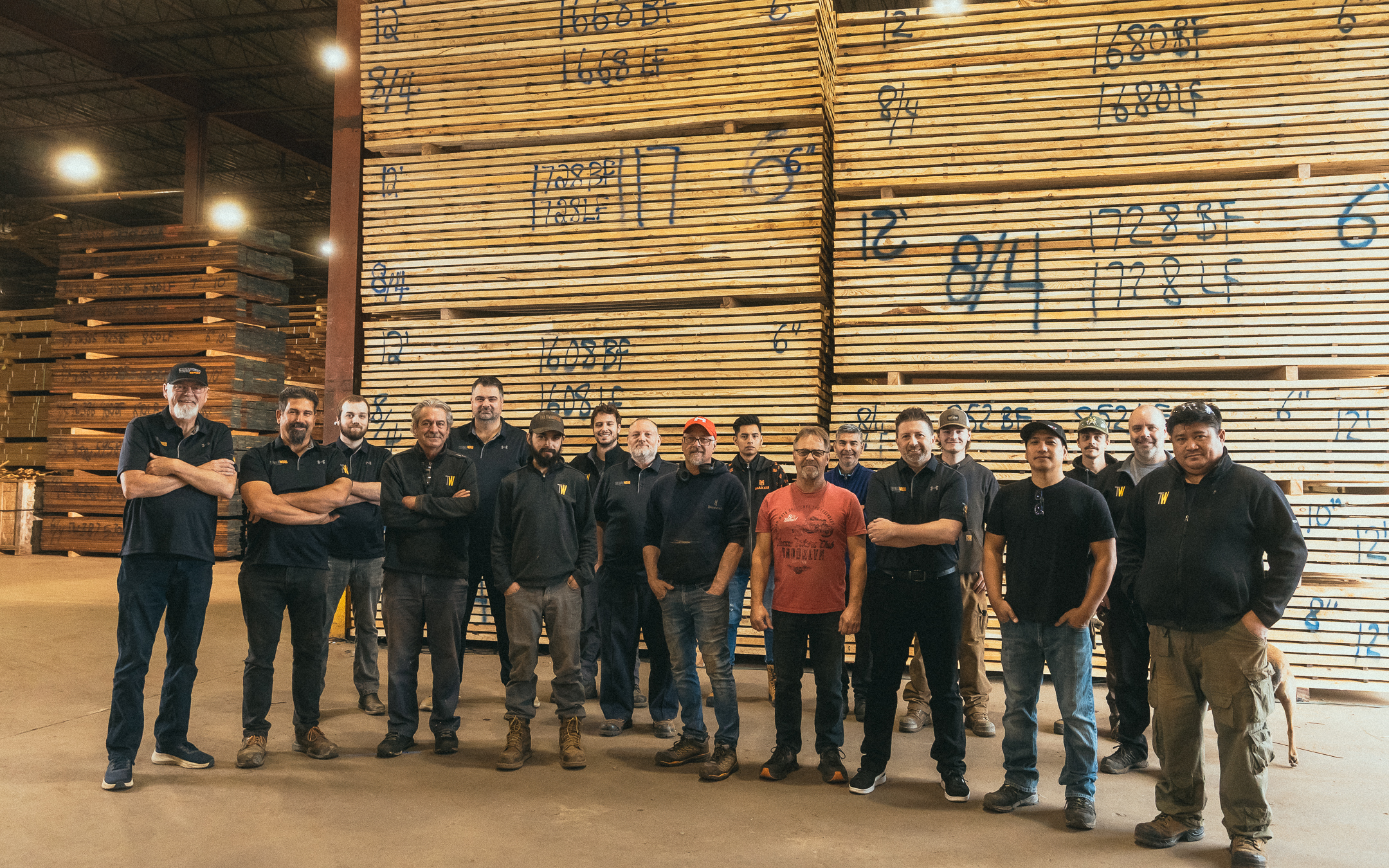At ThermalWood Canada, we’ve spent years refining the art and science of thermal modification — a process that transforms ordinary wood into a durable, stable, and environmentally friendly building material. In our recent episode of Thermal Wisdom, we took a closer look at one of the most popular applications for this process: thermally modified siding.
What Thermal Modification Really Does
Thermal modification isn’t just about drying wood; it’s about changing it at the molecular level. By subjecting the wood to temperatures up to four times higher than a conventional kiln in a controlled, low-oxygen environment, we eliminate moisture, sugars, and resins.
The result?
- Hydrophobic performance — the wood no longer absorbs or retains water.
- Dimensional stability — no swelling, warping, or contraction.
- Natural durability — fungus and insects can’t thrive in it.
- No chemicals — ever. Just heat and steam.
As Bob Lennon explains, “You’re essentially petrifying the wood in a way — making it stable, rot-resistant, and naturally protected, all while staying 100% green.”
The Beauty of Choice: Species and Profiles
ThermalWood Canada specializes in hardwoods, but the process works equally well on softwoods. Available species include pine, western hemlock, Douglas fir, maple, ash, oak, and birch, with ash being the most popular choice due to its striking grain pattern and durability.
From there, it’s all about customization.
“We offer 100% custom milling,” Lennon says. “We want to understand your project — vertical, horizontal, or angled installation — and help you choose the right profile and species for the look you’re after.”
Standard profiles include single, double, triple, and quadruple rabbet options, each providing a unique aesthetic for both interior and exterior applications.

Hidden Fastening, Visible Precision
One of the innovations that sets ThermalWood Canada’s siding apart is the integration of European fastening systems, such as the Grad™ hidden clip system.
This system not only secures the boards cleanly without visible screws but also leaves a ¼-inch air gap behind the siding, creating a natural rain screen that meets modern building codes.
For those preferring traditional fastening, concealed nailing within shiplap joints remains an option — though stainless steel screws are always recommended to prevent corrosion with the modified wood’s lower pH.
The Color Conversation: Coatings and Weathering
A major consideration for thermally modified siding is color evolution. Left unfinished, the wood naturally weathers to a silvery-gray patina over time, just as traditional wood does — but not always evenly.
Because sunlight, rain, and shade vary across a façade, upper sections may remain brown while lower sections gray faster. To achieve consistency, ThermalWood Canada recommends an oil-based coating like Cutek, a product developed in Australia that offers both UV protection and water repellence.
Cutek can be customized with pigments such as Smokey Gray, creating a Cape Cod–style appearance that naturally weathers into a uniform gray tone without peeling.
“Oil-based finishes soak into the wood, preventing surface checking and maintaining that beautiful, even color as it ages,” Lennon notes.
Built for Today, Rooted in Nature
Thermally modified siding offers a rare combination of beauty, performance, and sustainability — providing homeowners, builders, and architects with a real-wood option that’s durable, low-maintenance, and environmentally responsible.
No plastics, no chemicals — just Canadian craftsmanship and innovation that bring the timeless appeal of wood back to the modern building envelope.
So whether you’re designing a lakeside retreat, a commercial façade, or an interior accent wall, ThermalWood sidingdelivers one simple truth:Real wood can be as tough as it is beautiful.

